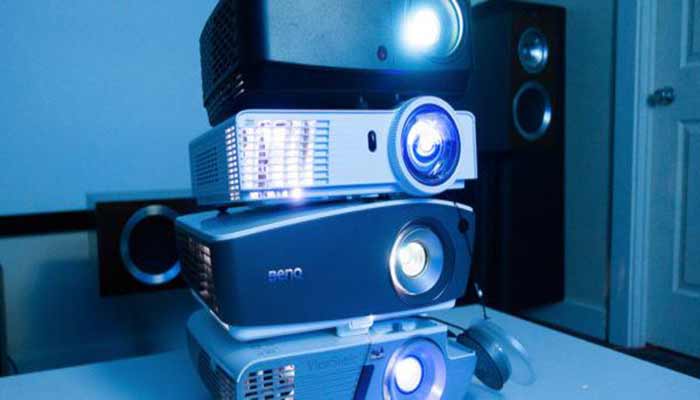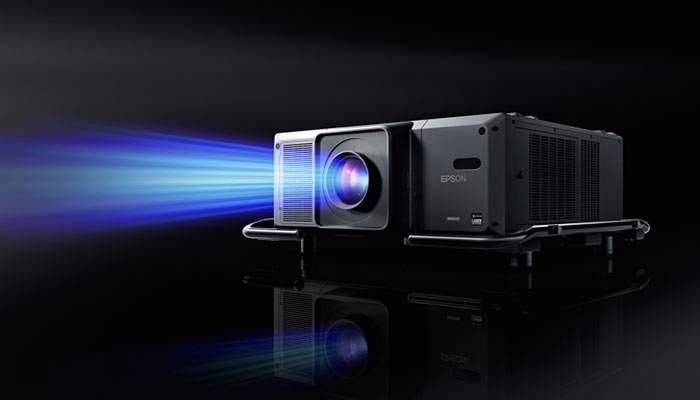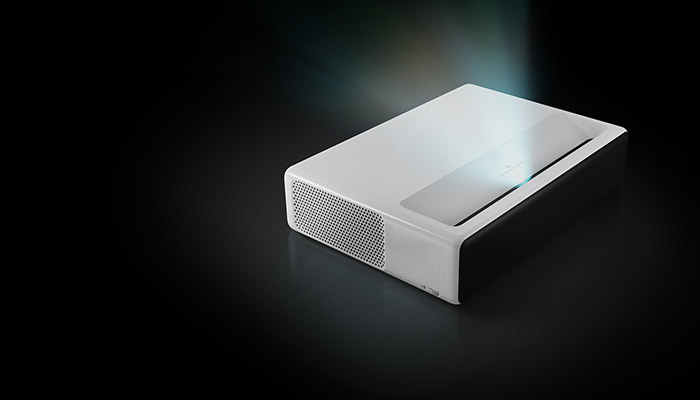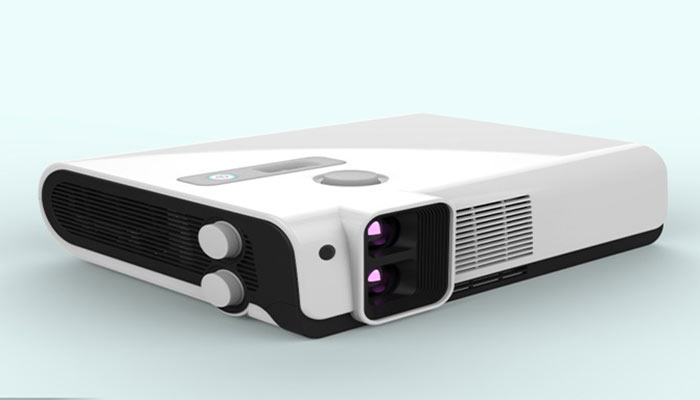Table of Contents
No. Projector lights are either incandescent or LED, and they’re not interchangeable. For instance, an incandescent bulb is meant to produce light while an LED is meant to produce a white light that then projects colors on the screen based on filters.
A few other differences also exist between the two types of bulbs, but it’s mostly about how they produce color versus cold-on-color (incandescent) and hue (LED).
Different Types of Projector Bulbs and Light Sources
Projectors are used in a variety of scenarios and by a variety of people. Whether you are in the classroom, an auditorium, or teaching at home it can be difficult to figure out which type of projector bulb or light source will work best for your needs.
We’ll talk about different types of projector bulbs and light sources; as well as how they compare to one another in terms of brightness, weight and cost. In addition, we’ll give some examples for classrooms and specifically who they may work best for.
After reading this article you should have a better understanding of which type of projector bulb or light source will best fit your needs. So, let’s get started.
The following is a list of 4 different projector bulb and light sources.
Standard Projector Lamp
A standard projector lamp emits light through an incandescent filament, heated by an electric current. These lamps are great because they are cheaper, and last longer than the other two types discussed below.
However, they also emit much more heat and they are not as bright as a laser or LED lamp. It also takes longer for a standard bulb to start up then LED or Laser Projector bulbs. Standard project lamps are not offered as an option with most premium video projectors.
Laser Projector Lamp
The newest type of video projector lamp, the laser projector lamp, is a white-light laser that emits extremely bright light without the danger of overheating (like the standard incandescent projector lamp). Unlike conventional projector lamps, the laser light source lasts longer and uses less energy.
Laser projectors use less energy than standard lamps and are more efficient in delivering the same amount of light, but they tend to be more expensive.
Led Projector Lamp
A LED projector lamp emits highly intense light through a solid-state diode (one of five different types of diodes) which keeps the lamp cool by not allowing the filament or circuit to get hot. LED lamps also last longer than standard incandescent lamps.
They are also much more efficient than a standard projector lamp. The light emitted from an LED projector lamp is blue, which is why the color of the image from this type of bulb is white, instead of a warmer yellowish color that you would expect to see in a regular incandescent bulb.
Dual Projector Lamp or Multi-Lamp
Some models of video projectors offer dual lamps or multi-lamps, each with its own bulb and light source. This allows the lamp and the light source to be used in different areas of the projector.
For example, video projection screens for an auditorium may use a combination of LED and standard lamps to provide a brighter light source that enhances the image quality while still being cool.
The type of lamp or light source used in a projector greatly affects contrast, color saturation, brightness, eye comfort, and visual acuity.
In addition, we must also consider how many lamps or lights are actually used in some models. For example:
- A single central lamp or light source in a large-screen theater will have more contrast, making the image better.
- Two lamps or lights, each used in different areas of the frame will give you a more rich and detailed picture. The pixels will be shadowy and located at different angles so that the closest point to your eye is bright while those farther back are dimmer. So these two lights create a wider angle of view.
- Multi-lamp projectors can perform a variety of functions.
To summarize what you’ve learned, here are the advantages and disadvantages of each type of projector lamp:
Standard: The standard incandescent lamp is cheaper and lasts longer than other types; however, it also emits more heat, does not start up as quickly, and has a lower lumen output than a high-quality LED or laser lamp.
LED: LED projector lamps last much longer than the standard lamp and are much cooler. The light from an LED lamp is bluer than the true color of natural light, and the cost of this lamp is higher than a standard projector lamp.
Laser: As you might expect, a laser projector lamp has the longest-lasting life and emits less heat. The light from a laser projector lamp is also brighter and whiter than the light from other lamps. However, it is more expensive than other types of lamps.
Dual: This type of lamp or light source allows for different lighting preferences when needed. For example, you can use an LED light source for a softer, more comfortable image while using a standard light source for a brighter image that displays with more intensity.
Why All OEM-Inside Projector Lamps are not Same
As a projector user, I have noticed that many people don’t know which OEM-Inside projector lamp they should purchase for their device. There are 3 different kinds of OEM-Inside lamps:
- UHP
- LMP
- LED
- LCD.
I will be discussing the differences of each lamp in this article.
Over the years, most OEM-Inside manufacturers have been improving their products. Each kind of lamp has its own advantages and disadvantages. It is important to know which kind of lamp you need before purchasing a new one for your projector or when repairing it with a backup lamp pick-up (LP).
The term “UHP” refers to a lamp without an inner layer (called the tubular medium in the film industry). This is because they are normally rated at over 100,000 hours of use, and are usually used for high-end projectors.
The term “LMP” refers to an inner layer in a lamp. This is because this type of lamp is only used for indoor products. UHP lamps can be used outdoors as well with proper protection from the elements.
The term “LED/LCD” refers to the projector itself. It normally used in projectors that are not meant for outdoor use.
I will be discussing general information about these lamps and what they can do for you later in this article. The information below contains miscellaneous specs about each of these lamps, but I have included them for a more comprehensive understanding of their usage and benefits. But first, let’s begin with a review of the three different lamps.
UHP lamp: These lamps are used in projectors that will be fixed onto the ceiling of the room. UHP lamps are rated at over 100,000 hours of use. They usually come with a lifetime warranty on their bulbs.
UHP lamp manufacturers that produce these lamps include G2 Solutions, Actica Lighting Systems, and InFocus America.
LMP lamp: These lamps are used in projectors that will be fixed on the ceiling of the room. These are also rated at over 100,000 hours of use.
LMP lamps usually come with a lifetime warranty on their bulbs. LMP lamp manufacturers include (but not limited to) Ushio, Ushio America, and Osram OptoSemiconductors.
LED/LCD projector lamp: These lamps are used in projectors that will be fixed onto the ceiling of the room. These are also rated at over 100,000 hours of use. LED/LCD projectors usually come with a lifetime warranty on their lamps.
The differences between UHP, LMP, and LED/LCD projectors can be summarized as follows:
UHP lamp: Used in projectors that will be fixed onto the ceiling of the room. The UHP lamp is rated at over 100,000 hours of use. It normally comes with a lifetime warranty on its bulb. This lamp is mostly used in high-end projectors.
LMP lamp: Used in projectors that will be fixed onto the ceiling of the room. The LMP lamp is rated at over 100,000 hours of use. It normally comes with a lifetime warranty on its bulb. This lamp is mostly used in high-end projectors.
LED/LCD projector lamp: Used in projectors that will be fixed onto the ceiling of the room. They are usually rated at over 100,000 hours of use. This lamp can be used indoors or outdoors. They normally come with a lifetime warranty on their bulb. This lamp is mostly used in non-high-end projectors.
Related Articles:







